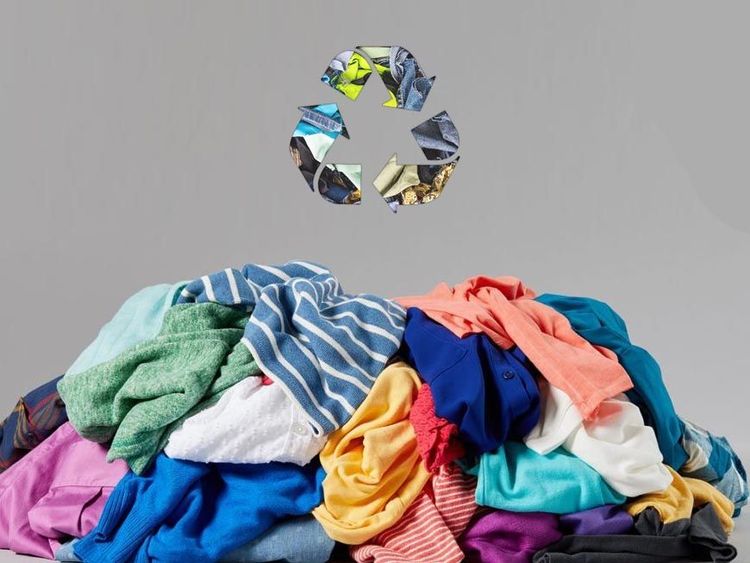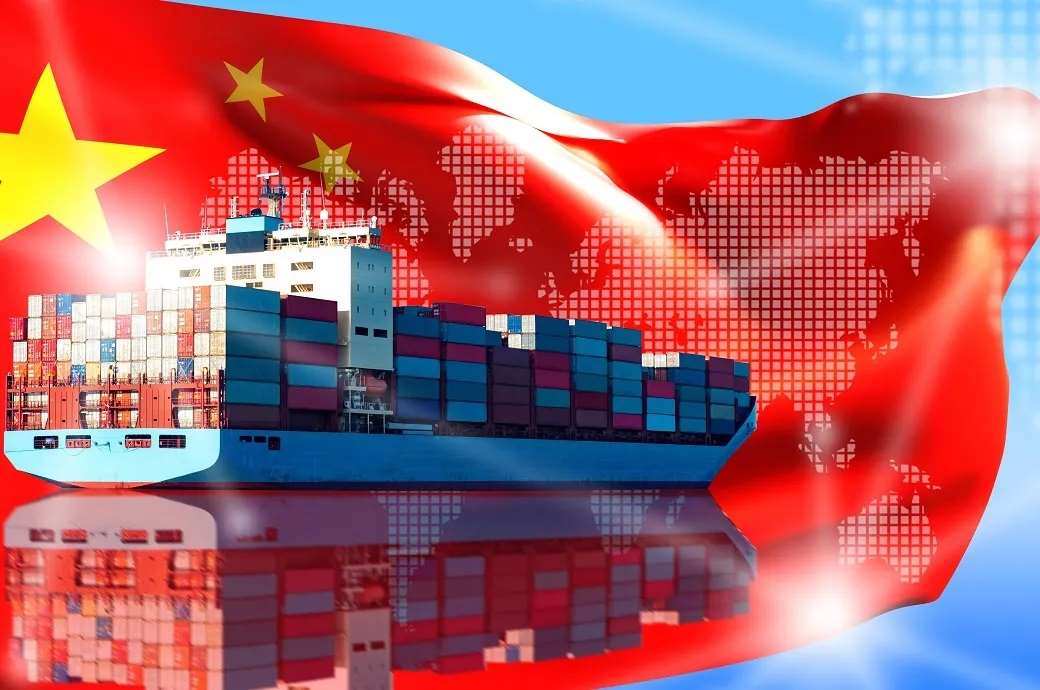FW
Lingerie giant Victoria’s Secret & Co (VS & Co) has expanded its leadership team with four new appointments at the company,
The brand has appointed Adam Selman as its new Executive Creative Director.
Known for his bold designs and brand storytelling, Selman most recently served as the chief design officer for Savage X Fenty, where he played a key role in launching he brand’s activewear and loungewear categories.
Having started his career with designer Zaldy Goco, Selman began operating independently in 2010. He created world tours and custom looks for Beyonce, Lorde and Katy Perry besides designing Rihanna’s looks for her Victoria’s Secret Fashion Show performances. The designer is also know for launching two namesake brands, Adam Selman, and Adam Selman Sport.
Besides, VS & Co also promoted Anne Stephenson, Chief Merchandising Officer as the new president of brand Victoria’s Secret brand.
With over 25 years of experience in merchandising, Stephenson is an expert in product strategy, brand development, and merchandising execution across top retail and apparel brands.
Moreover, Ali Dillion has been appointed as the new President of the brand Pink. A merchandising and brand executive with over two decades of experience, Dillion leads product strategy, merchandising, and brand development for fashion retailers. She was most recently president of Alex Mill.
Amy Kocourek has been appointed as the new President – Beauty. With over years of experience in strategy, product innovation, and business transformation, Kocourek has an expertise in driving revenue growth and expanding categories. Most recently, she functioned as the Chief Merchandising Officer, Kendra Scott.
All three brand presidents will report directly to Hilary Super, CEO, VS&Co. They will help accelerate growth across the company’s portfolio of brands, focusing on Victoria’s Secret and Pink, and its beauty business.
The United States Fashion Industry Association (USFIA) has welcomed the temporary pause on reciprocal tariffs announced by President Donald Trump, viewing the 90-day reprieve as a critical window for meaningful negotiations.
The association emphasized that global sourcing is vital to the fashion industry and expressed optimism that the tariff suspension will allow for constructive dialogue to dismantle trade barriers and open markets.
USFIA, whose motto is "Fashion Made Possible by Global Trade," underscored the importance of a stable and predictable trade environment for American fashion brands and retailers. However, the group voiced concern over escalating tensions with China, warning that continued tariff escalation could harm both economies.
While the pause offers hope, USFIA urged the US and China to move toward a comprehensive resolution of longstanding disputes. The organization reiterated its stance that trade wars benefit no one and called for diplomacy over disruption in global trade policy.
Madagascar's crucial textile industry is facing the potential loss of approximately 60,000 jobs following US President Donald Trump's decision to impose a 47 per cent tariff on goods from the country.
Vital to the country’s economy, Madagascar’s textile and clothing sector employs around 180,000 people and contributes about 20 per cent of the nation’s GDP, according to a 2023 report by the International Labor Organization (ILO).
With a population of 31 million, Madagascar exported goods worth $733 million to the US in 2024, much of it through the African Growth and Opportunity Act (AGOA) — a US trade program that allows many African countries to export selected goods duty-free. The US goods trade deficit with Madagascar was $679.8 million in 2024. The United States exported goods worth $53.41 million to Madagascar during the same period.
Rindra Andriamahefa, Executive Director, Groupement des Entreprises Franches et Partenaires (GEFP), notes, this figure includes both permanent job cuts and temporary layoffs.
Beatrice Chan Ching Yiu, President, GEFP, cautiones, the new tariffs would force investors to shift their focus to other exporting countries facing significantly lower trade barriers.
In response to the impending crisis, Madagascar’s government has begun coordinating with other African nations similarly affected by the US tariffs, seeking to establish a united front.
A constructive bilateral dialogue with US authorities is underway, including technical discussions aimed at understanding the rationale behind the decision, says Foreign Affairs Ministry, Madagascar.
As discussions continue, industry leaders in Madagascar fear that the steep tariffs could undo years of progress in the country’s garment manufacturing sector, which has long been a significant source of employment and economic stability.
Suit imports by the US declined by 4.75 per cent in 2024, shows data from the Office of Textiles and Apparels (OTEXA). The value of these imports contracted from $1,189.85 million in 2023 to $1,133.28 million in 2024, indicating a downward trend in demand or changing trade dynamics.
China remained the largest supplier of suits to the US, with imports totaling $222.92 million in 2024. However, this represented a 3.10 per cent decline from the previous year, suggesting possible sourcing diversification or economic factors impacting trade.
Another significant player, India experienced a sharper 5.42 per cent decline in suit exports to the US, bringing its total value down to $54.80 million. Similarly, Mexico saw the steepest decline at 21.87 per cent, followed by Bangladesh, which fell 18.69 per cent, and Indonesia, which dipped by 11.59 per cent. The weakening of these sourcing centers indicates shifts in buyer preferences or cost competitiveness.
In contrast to the overall downturn, Canada emerged as the biggest gainer, recording an 11.17 per cent increase in suit exports to the US. Imports from Canada rose from $108.44 million in 2023 to $120.56 million in 2024, making it one of the few countries to buck the downward trend.
The rise in Canadian suit exports to the US could be due to factors such as trade agreements, geographical proximity advantages, or a preference for North American-made apparel.
Vietnam was the only other country to register positive growth, with a 2.53 per cent increase in suit exports to the U.S. This suggests that Vietnam continues to strengthen its position in the global apparel trade, benefiting from its cost-effective manufacturing and trade relationships with the US.
The American Apparel & Footwear Association (AAFA) has urged the US administration to establish a more predictable trade framework following President Donald Trump’s announcement of a 90-day pause on reciprocal tariffs and the imposition of new tariffs on imports from China.
Steve Lamar, President and CEO of AAFA, voiced concern over the instability caused by fluctuating trade policies, warning that “on-again, off-again tariff policy is forcing companies to careen between chaos and costs.” While welcoming the pause as a chance for meaningful negotiations, Lamar emphasized the need for a long-term, consistent approach that encourages investment and supports American jobs.
Lamar also criticized the continued burden placed on US apparel and footwear imports from China. “This extreme tariff... will lead to higher prices for everyday apparel, footwear, and accessories and higher costs for US manufacturers,” he said.
AAFA expressed hope that the tariff suspension will be extended beyond China to all trade partners, enabling US companies to shift focus from policy uncertainty to promoting balanced, fair trade. The association also called on the administration to collaborate with Congress and stakeholders to build a durable, partnership-based trade policy.
In response to ongoing uncertainty, AAFA has endorsed the bipartisan Trade Review Act of 2025, introduced by Senator Maria Cantwell and co-sponsored by a cross-party group of lawmakers. The bill aims to restore Congressional authority over trade policy, reinforcing Article 1, Section 8 of the Constitution.
Japanese operator of the clothing chain Uniqlo, Fast Retailing is expected to post a14 per cent growth in its operating profit reaching 125.9 billion yen in Q2, FY25.
As per an LSEG consensus, this would represent a record second-quarter performance for the company, nearly doubling the first quarter's 7.4 per cent profit growth.
From its humble beginnings as a single store in Hiroshima four decades ago, Uniqlo has expanded to over 2,500 locations worldwide. The company's success is built on selling affordable fleece and cotton apparel predominantly manufactured in China and other Asian countries.
However, this established business model now faces challenges due to widespread tariffs initiated by the US President, coupled with retaliatory measures from some of America's key trading partners.
In response to a slowing economy in China, its largest overseas market with over 900 stores, Fast Retailing has increasingly focused on growth opportunities in North America and Europe.
Mark Chadwick, an independent analyst acknowledges the negative impact of the tariffs on Fast Retailing but points out that its competitors in the retail sector will likely face similar pressures, and other industries might be even more severely affected.
He believes that textile supply chains possess greater flexibility compared to sectors like automotive. Chadwick anticipates that the US tariffs will negatively impact Fast Retailing's earnings over the next year, albeit less significantly than other global firms such as Nintendo and Toyota.
Tadashi Yanai, Founder, Fast Retailing, aims to establish his company as the world's leading clothing brand. He has consistently advocated for free trade and defended the company's business dealings in China despite human rights concerns.
The US President has indicated that Japan would face a 24 per cent reciprocal tariff on non-auto products, while duties on Chinese goods are set to rise to 104 per cent.
UBS analysts report. Uniqlo goods shipped to North America are sourced from outside China. Their estimates suggest, Fast Retailing's tariff costs could reach around 34.3 billion yen in the next fiscal year, potentially reducing business profit by approximately 6 percent.
Takahiro Kazahaya, Analyst, UBS, suggests, increased price sensitivity among consumers might lead them to re-evaluate the value-pricing proposition at Uniqlo, potentially opening up business opportunities in the medium term.
For FY25 ending August 2025, Fast Retailing projects an operating profit of 530 billion yen, marking its fourth consecutive year of record earnings. The company’s domestic sales have recently been boosted by a surge in duty-free shopping, driven by a tourism boom in Japan fueled by a weak yen.
Serdar Berdimuhamdov, President, Turkmenistan emphasized on the need to expand the variety and output of the textile industry during the latest meeting of the Cabinet of Ministers.
Berdimuhamedov also underscored the significance of taking international best practices into account when improving the operations of the State Commodity and Raw Materials Exchange and the Chamber of Commerce and Industry. He issued related directives to Nokerguly Atagulyyev, Deputy Chairman, Cabinet of Ministers.
According to Atagulyyev's report, the textile sector in the country grew by 14.2 per cent in Q1, FY25. Production of cotton yarn increased by 42.9 per cent, fabric production grew by 50.9 per cent, production of sewn and knitted goods increased by 4.3 per cent, and leather product output rose by 40.4 per cent.
The State Commodity and Raw Materials Exchange conducted 72 trading sessions, registering 6,878 transactions during the reporting period. The output of the Chamber of Commerce and Industry increased by 2.1 per cent.
Represented by the Union of Industrialists and Entrepreneurs, industrial production grew by 4.3 per cent during the quarter.
The government meeting reviewed the results of the work carried out across the country during the first three months of the current year.

Techtextil and Texprocess 2026 are set to mark a powerful return from 21 to 24 April in Frankfurt, Germany, with exceptionally high registration numbers and a remarkable influx of new exhibitors. As the textile and apparel industries face turbulent market conditions driven by recession, sustainability demands, and geopolitical tensions, the twin trade fairs are shaping up to be critical platforms for innovation, collaboration, and global visibility.
Industry players from around the world are eager to present breakthroughs in materials, technology, and sustainable solutions at these leading events. The organiser, Messe Frankfurt, has adapted hall layouts and introduced new product segments to better cater to the evolving needs of participants. The aim is clear: to unlock new market opportunities, secure business partnerships, and collectively address industry challenges.
Texprocess: Global spotlight on smart manufacturing solutions
Sabine Scharrer, Director of Brand Management Technical Textiles & Textile Processing at Messe Frankfurt, emphasised the strategic relevance of the events: “The outstanding level of bookings shows the industry is seeking global visibility more than ever. The key lies in finding the right partners for pioneering innovations and unlocking market opportunities.”
Texprocess 2026, dedicated to the processing of textile and flexible materials, has already confirmed participation from prominent names such as Brother Internationale Industriemaschinen, Durkopp Adler, Gutermann, Morgan Tecnica, Robotech, Sheffield Cutting Equipment, Style3D | Assyst, Veit, and Zund Germany. The show is also attracting an impressive list of new exhibitors, including Amann, Coloreel, Comelz, Cutting Edge Automation Machines, and Pathfinder Australia. Automation, digitalisation, and artificial intelligence are central themes, as companies showcase advanced solutions to meet international demand for greater efficiency.
Techtextil: Innovation meets high demand across sectors
Techtextil 2026, the global hub for technical textiles and nonwovens, is likewise witnessing strong exhibitor interest. Major players like Bruckner, Concordia Textiles, Groz-Beckert, Klopman International, Kolon Industries, Lenzing, Sattler Pro-Tex, Sioen, and Schill+Seilacher have confirmed their participation. Newcomers such as Dystar Singapore, Indorama Ventures Fibers Germany, Monteiro Ribas, TreeToTextile, and Woolmark will join them, offering a broad spectrum of high-tech textile innovations tailored to industries including automotive, aerospace, apparel, and more.
This edition brings two notable additions: Hall 9.0 will debut dedicated zones for Textile Chemicals & Dyes and Performance Apparel Textiles. Both segments are already experiencing strong demand. The close proximity of these new zones to Texprocess in Hall 8.0 further enhances synergy, especially for apparel manufacturers seeking integrated supply chain solutions.
As the industry rallies to meet global challenges with innovation, Techtextil and Texprocess 2026 are positioning themselves as vital marketplaces for transformation. The momentum from high exhibitor turnout underscores their role as leading platforms for shaping the future of technical textiles and processing technologies.
Opening on April 9, 2025 at the Ho Chi Minh City, the 2025 Vietnam Saigon Textile & Garment Industry – Fabric & Garment Accessories Expo (SaigonTex - SaigonFabric 2025) registered a 6 per cent increase in participants, hosting over 1,100 exhibitors from 25 countries and territories, including key players like Bangladesh, China, Japan, Korea, the US, and Vietnam, highlighting the expo's global significance.
A key attraction is the second Product Presentation Program (PPP), featuring eight themed displays with static exhibits, live technology demonstrations, and a dynamic fashion show presenting garments made from exhibitors' materials, modeled by professional dancers.
VITAS organized a bespoke business matching program, facilitating connections between exhibitors and potential buyers. Attendees can also engage with leading global brands and explore the latest advancements in textile and garment manufacturing technologies.
At the opening ceremony, Tran Ngoc Liem, General Director, VCCI-Ho Chi Minh City branch underscored the textile and garment sector's pivotal role in Vietnam's economy, noting its significant contributions to domestic and international trade and its consistent attraction of foreign investment.
In 2024, Vietnam's textile and garment exports grew by 11.26 per cent Y-o-Y to $44 billion in 2024, propelling it past Bangladesh to become the world's second-largest exporter, after China.
Despite this success, Liêm acknowledged challenges like labor shortages, order volatility, FTA origin rule complexities, and increasing trade barriers. He stressed the need for companies to strengthen supply chains, invest in technology and automation, and adopt sustainable practices.
Liêm outlined a strategic roadmap for the industry, projecting a gradual shift towards sustainable development by 2030, followed by deeper global integration and a circular economy focus by 2035, alongside domestic value chain completion.
Echoing this, Cao Hữu Hiếu, General Director, Vinatex emphasized the growing importance of green and digital transformations, urging Vietnamese enterprises to focus on high value-added production, adopt modern technologies for resource efficiency, invest in advanced equipment, and pursue dual transformation strategies.
Hiếu affirmed the expo as a prime platform for accessing cutting-edge technologies and fostering greater trade collaboration.
Co-organized by prominent industry bodies, SaigonTex - SaigonFabric 2025 is being held at the Saigon Exhibition and Convention Center until April 12, 2025.
Monforts to showcase advanced technical textile coating solutions at Techtextil North America in USA
German textile machinery specialist Monforts will spotlight its cutting-edge coating and finishing technologies for technical textiles at Techtextil North America, held in Atlanta, Georgia, from May 6-8. Represented by PSP Marketing of Charlotte, North Carolina, Monforts will exhibit at stand 3231 within the VDMA German Pavilion at the Georgia World Congress Center.
The company’s versatile MontexCoat system, combined with Montex stenters, enables the production of a wide range of technical fabrics, including tents, awnings, blackout blinds, sail cloth, automotive interiors, and medical disposables. The system supports diverse techniques such as full PVC coating, pigment dyeing, low-penetration treatments, knife and roller coating, screen printing, and solvent coatings in explosion-proof environments. Rapid fabric changeovers ensure material and energy efficiency.
Achim Gesser, Monforts Area Sales Manager, noted the strong market response to the MontexCoat’s flexibility. For customers with simpler needs, the economical coaTTex unit offers air knife and knife-over-roller coating.
At its Advanced Technology Center (ATC) in Monchengladbach, Germany, Monforts has integrated a MontexCoat unit into a full pilot line for industrial-scale fabric testing. This line can process materials at up to 320°C, even applying different coatings on each fabric side in a single pass using TwinTherm burners. It also includes a powerful stretching unit capable of ten-ton tensioning in both length and width.
Additional innovations include the T-max grease-free stenter chain for high-speed, high-temperature applications. With customers spanning home textiles to automotive and flame-retardant fabrics, Monforts is set to reaffirm its commitment to North America’s growing technical textiles market at the upcoming Atlanta showcase.










